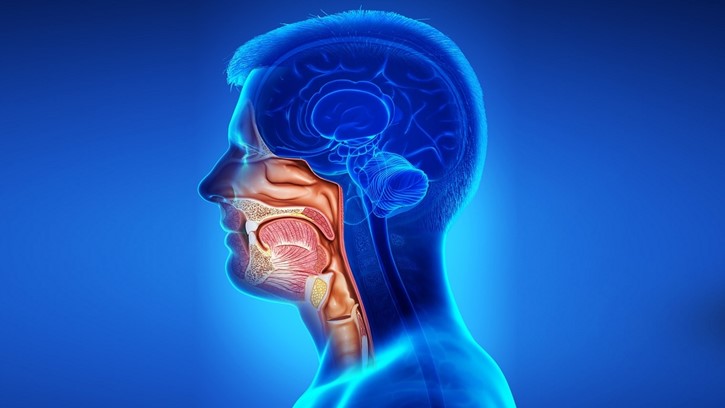Head and neck cancers encompass malignant tumors that develop in or around the throat, larynx, nose, sinuses, and mouth. These cancers are often grouped due to their behavior and treatment methods. However, understanding the symptoms and treatment options is crucial for early detection and management of these cancers.
What Are Head and Neck Cancers?
Head and neck cancers typically begin in the squamous cells that line the moist surfaces of the mouth, nose, and throat. These cancers are categorized based on their location:
- Oral Cavity Cancer: This affects the lips, the front two-thirds of the tongue, the gums, the inside lining of the cheeks, the floor of the mouth, and the hard palate.
- Pharyngeal Cancer: This includes cancers in the pharynx, the hollow tube that starts behind the nose and ends at the top of the windpipe and esophagus.
- Laryngeal Cancer: This is cancer of the larynx or voice box.
- Nasal Cavity and Paranasal Sinus Cancer: These affect the nasal cavity (the space just behind the nose) and the paranasal sinuses (small hollow spaces in the bones around the nose).
- Salivary Gland Cancer: This affects the glands that produce saliva, including the parotid, submandibular, and sublingual glands.
Common Symptoms of Head and Neck Cancers
Recognizing the symptoms of head and neck cancers early on can lead to timely treatment and better outcomes. While symptoms can vary depending on the specific area affected, common signs include:
- Persistent Sore Throat: A sore throat that doesn’t go away, even after treatment, could be a warning sign.
- Lump in the Neck: A lump or swelling in the neck that doesn’t subside is often a sign of cancer in the lymph nodes.
- Difficulty Swallowing: If you find it hard or painful to swallow, it could indicate a tumor in the throat or esophagus.
- Hoarseness or Voice Changes: Persistent changes in your voice, like hoarseness, can be a symptom of laryngeal cancer.
- Ear Pain: Pain in the ear, particularly when swallowing, can indicate a tumor in the throat.
- Unexplained Weight Loss: Sudden and unexplained weight loss may be a sign of various cancers, including those of the head and neck.
- Nasal Obstruction or Bleeding: Difficulty breathing through the nose or frequent nosebleeds may signal nasal cavity or sinus cancer.
- Mouth Sores: Persistent sores in the mouth that do not heal could be a sign of oral cancer.
Risk Factors for Head and Neck Cancers
Several factors can increase the risk of developing head and neck cancers. These include:
- Tobacco Use: Smoking and the use of smokeless tobacco products are the most significant risk factors.
- Alcohol Consumption: Heavy alcohol use increases the risk, particularly when combined with tobacco use.
- Human Papillomavirus (HPV): Certain strains of HPV are linked to oropharyngeal cancers, particularly those affecting the tonsils and the base of the tongue.
- Prolonged Sun Exposure: Prolonged exposure to the sun, especially without protection, can lead to cancer of the lips.
- Poor Oral Hygiene: A lack of proper oral care can increase the risk of oral cancers.
- Diet: A diet low in fruits and vegetables may increase the risk.
Diagnosing Head and Neck Cancers
Diagnosis of head and neck cancers typically begins with a thorough physical examination, during which a doctor will check for lumps, abnormalities, and other signs of cancer. If cancer is suspected, further tests may be conducted, including:
- Imaging Tests: CT scans, MRIs, and PET scans can help determine the location and size of the tumor.
- Endoscopy: This involves inserting a thin, flexible tube with a camera into the nose, throat, or mouth to view the affected area.
- Biopsy: A sample of tissue is taken from the suspected tumor and examined under a microscope to confirm the presence of cancer cells.
Treatment Options for Head and Neck Cancers
The treatment of head and neck cancers depends on the type, location, and stage of cancer, as well as the patient’s overall health. Common treatment options include:
- Surgery: Surgery is often the first line of treatment for head and neck cancers, especially if the tumor is localized. Moreover, the goal is to remove the tumor and, if necessary, surrounding tissue or lymph nodes.
- Radiation Therapy: High-energy beams, such as X-rays, are used to target and kill cancer cells. Radiation therapy may be used alone or in combination with surgery and chemotherapy.
- Chemotherapy: Chemotherapy involves using drugs to kill cancer cells or stop their growth. It is often used in conjunction with radiation therapy, especially for advanced-stage cancers.
- Targeted Therapy: This treatment targets specific molecules involved in cancer growth and spread, minimizing damage to healthy cells. Targeted therapy can be used alone or with other treatments.
- Immunotherapy: This treatment boosts the body’s immune system to help fight cancer. It is particularly effective for cancers that are resistant to other treatments.
Conclusion
In summary, understanding head and neck cancers, their symptoms, and treatment options is crucial for early detection and effective management. Regular check-ups, avoiding risk factors like tobacco and excessive alcohol consumption, and maintaining a healthy lifestyle can significantly reduce the risk. If you experience any symptoms mentioned above, consult a healthcare professional promptly for evaluation and potential early intervention.

Trauma to the head or neck can affect the nerves or blood flow in the ear, leading to Neck Injuries